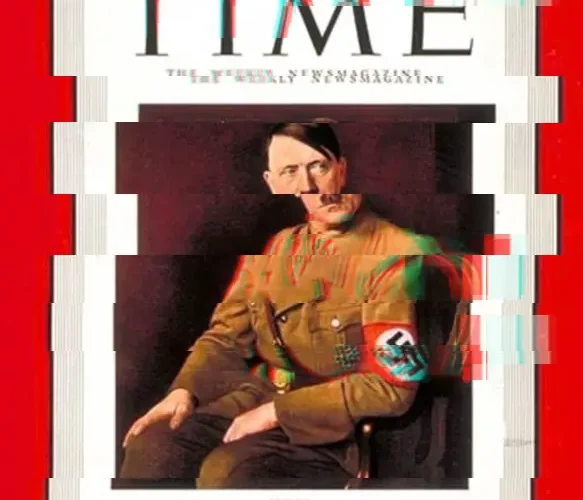In 1938, Adolf Hitler was named TIME Magazine’s “Man of the Year,” a decision that, from today’s perspective, might seem controversial given the atrocities committed under his regime. However, in the context of the late 1930s, this choice was influenced by several factors viewed through the lens of that time.
Fast track:
TL;DR
The main reason cited by TIME for Hitler’s selection related to his role at the Munich Conference on September 29, 1938. At this event, Hitler, along with leaders from Italy, France, and Great Britain, agreed to the annexation of Czechoslovakia’s Sudetenland to Germany in what was seen as an effort to avoid another world war. At the time, this achievement was perceived as a successful effort to maintain peace in Europe, albeit temporarily and at a great cost to Czechoslovakia’s sovereignty.
TIME portrayed Hitler as the decisive figure in Munich, suggesting his policies and actions had reshaped the political landscape of Europe dramatically. The magazine noted Hitler’s aggressive foreign policy and his challenges to the Treaty of Versailles. He had expanded Germany’s territory without war, specifically through the annexation of Austria and the Sudetenland, which were viewed as significant achievements by many contemporaries.
Furthermore, the article highlighted the relief felt in the West over the avoidance of war, despite the moral compromises this entailed. This sentiment was shared widely among the English-speaking public, who were primarily concerned with avoiding another conflict akin to the First World War, which had resulted in massive casualties and little perceived gain for the countries involved.
TIME’s choice reflected the magazine’s view of influence and power in shaping global events, rather than a moral endorsement of the individuals chosen. This distinction is crucial for understanding the rationale behind their selection during that period. The article also delved into other powerful figures of the time, like Francisco Franco, suggesting that he might have been a contender for the title had the Spanish Civil War concluded differently that year.
Despite the ensuing historical judgment of Hitler’s actions and the horrific consequences of his policies, the decision to name him “Man of the Year” in 1938 was rooted in the immediate impacts he had on Europe’s geopolitical dynamics, rather than an approval of his ethical or moral stance. This context is essential for understanding the motivations and perspectives of the time, which significantly differ from contemporary views on leadership and moral responsibility.
TL;DR
- 📜 Historic Recognition: Adolf Hitler was named TIME Magazine’s Man of the Year in 1938, a decision that seems shocking today but was based on his significant influence on global events at the time, particularly the Munich Agreement.
- 🌍 Global Impact: Hitler’s actions, including the annexation of Austria and the Sudetenland crisis, significantly shifted the political landscape of Europe, which led to his selection as Man of the Year.
- 🔍 Controversial Choice: Despite the atrocities committed under his regime, including Kristallnacht, the magazine highlighted Hitler’s role in averting a potential war over Czechoslovakia through the Munich Agreement, presenting him as a peacekeeper in the eyes of the Western powers at the time.
- 📅 Perspective of Time: The discussion highlights how the perception of what makes a significant historical figure was different at the time, with Hitler’s aggressive foreign policy and reshaping of European boundaries being seen as momentous achievements despite their violent and oppressive nature.
